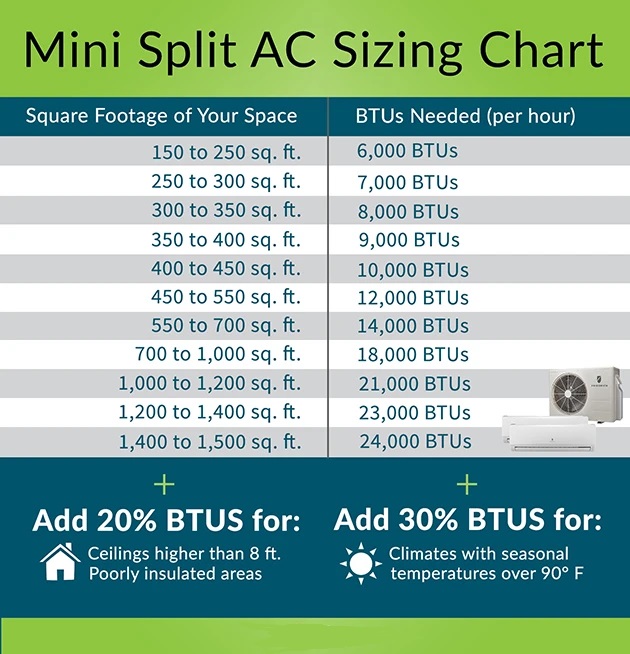Do I Need Mini Split Or Central Air
Choosing the best cooling solution for your home can quickly become a confusing endeavor. With so many different options out there, it’s enough to make your head spin. In your research process you may have come across ductless mini-split air conditioners. They’re an increasingly popular cooling option, but are they really better than traditional central air conditioners? We think so but you’ll have to decide for yourself. Keep reading to check out how this efficient technology stacks up compared to central cooling. At Murrayville Plumbing & Heating Ltd we get this question all the time, do I need mini split system or central air for my home. If you have a furnace and a good vent duct system you might want a mini split system. If you have hydronic heating in your home, a mini split with multiple zones might be the solution to your cooling needs.
Disadvantages of Central Air Conditioners
Central AC is what most people are familiar with, so it makes sense that individuals have chosen to install these units in their homes in the past. However, just because it’s what we know doesn’t necessarily mean it’s to best option. In fact, when you look at central air conditioning units, there’s a few drawbacks you might want to consider.
- Ductwork Required: In most newer homes, ductwork is probably already there so it’s not as big of an issue but that may not be true if it’s an older home. To install a central unit in homes without ducting you’re going to first go through a costly ductwork installation. That’s an expensive additional cost on top of purchasing the HVAC unit.
- Energy Waste: Whether you install it or your home already has it, ducting can still lead to increased energy costs year after year. Cracks and holes are going to begin to appear in ductwork over time. As your air conditioner is cooling, air is going to escape, meaning the unit is going to have to work harder and longer to cool your home.
- One-Size-Fits-All-Cooling: Does your home have a lot of spare bedrooms that are rarely used? Well with a central unit you’re going to be cooling them whether you need to or not. That means you’re paying to cool areas that don’t require it.
- Maintenance Requirements: Routine maintenance of a central AC is a real time commitment. Ranging from annual upkeep of the unit itself to the need to clean air ducts every 3-5 years, you’re going to be busy in order to keep the air conditioner in top shape.
What is a Ductless Mini-Split?
A relatively newer technology, mini-splits provide a more customizable cooling experience. They’re comprised of an outdoor condenser and indoor fan unit. Typically, the indoor unit mounts to the ceiling or wall and is connected to the condenser via a conduit. In order to cool a room, refrigerant passes through the conduit and into the room. Mini splits are available in single zone units for cooling individual rooms, or multi-zone units that allow for multiple indoor fans to be connected to a single condenser. This individualized performance allows owners to only cool the areas they need cooled.
Advantages Of Mini Split System
From a quieter performance to a more efficient operation, mini-split cooling systems offer several advantages over central air conditioners.
- Less Noise: Because the compressor is housed outside, the only noise these units create is from the unit’s fan.
- Zone Cooling: Cool and heat, if using a system with built-in heat, only those rooms that you want to. Unlike traditional air conditioners that waste energy cooling rooms that are never used, you can choose to only cool rooms that you use the most like bedrooms or living spaces.
- No Ductwork: Eliminating the need for duct work, mini-split systems limit the loss of efficiency and performance caused by leaks and cracks commonly associated with central cooling. Allergy and asthma sufferers will find cleaner indoor air since you don’t have to worry about allergens and other particles being distributed by dirty ductwork.
- Easier Installation: Most mini-split air conditioners only require a very small hole through a wall for running the refrigerant line. Since most manufacturers provide a variety of line lengths, home owners are able to place the compressor on one side of the house and run the lines all the way to the other side. It’s important to remember that manufacturers require mini-splits to be installed by a licensed HVAC professional in order for warranties to be valid.
Examine All of the Costs
Many times people are misled by the costs associated with each unit. Those looking to convince you to purchase a central air conditioning unit are going to try to get you to focus on upfront costs. When compared to central units, the upfront costs of a mini-split system may be slightly higher, but that doesn’t tell the whole story. Ductless systems are significantly more efficient than central air conditioners, so you’re going to spend a lot less over time to keep your home more comfortable. With it, you’ll quickly recoup your installation costs in added energy savings.
Reducing Your Energy Usage
Energy savings are great but increasingly customers aren’t just concerned about cost but what effects their cooling needs are having on the environment. That’s why mini-splits are such a great option, especially when compared to a central cooling unit. When choosing between the two options, take a look at 2 important measurements, Seasonal Energy Efficiency Ratio (SEER) and Energy Efficiency Ratio (EER).
- SEER: Federal requirements mandate that as of 2015 mini-splits must have at least a 14.0 SEER in order to be used in the United States. SEER measure the cooling output during a typical cool season, so the higher the SEER, the more efficient it is.
- EER: This looks at energy usage per square foot of cooling. It’s an important number when considering how well different cooling options are going to perform in your desired space.
One final item to look for is an Energy Star rating. Products carrying this seal mean that they have been verified to significantly contribute to energy savings without sacrificing the performance customers desire. When you choose a mini-split system over other options, you can reduce your cooling and heating costs by up to 30%.
Finding the Right Unit for Your Home
Another commonly used tactic to try to get you to select a central unit is by saying that finding a mini-split to fit your home is too difficult. That couldn’t be farther from the truth. All you need to know is the square footage of the space you’re looking to cool and the BTUs associated with the product. If you’re purchasing a multi-zone system, you’ll want to be sure to check out the the BTU rating for each individual indoor unit. We’ve put together the below chart to help give you an idea of how many BTUs you need to effectively cool different room sizes.
Call Us For Help
We can give you all of the facts about mini-split systems but some times it’s better to hear about it from customers just like you. That’s why we have a blog post about why one of our customers chose a ductless AC and their experiences with it. Get a free estimate on your next HVAC purchase from Murrayville Plumbing & Heating Ltd. Do you still have questions about mini-splits or still aren’t sure which one is best for you? We can take the guesswork out of decision-making. Contact our product experts at 778.888.6451 We want to help you make your indoor environment a healthy one.


